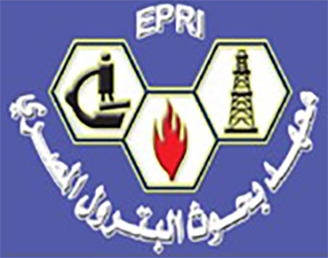Article Type
Research Paper
Highlights
- Wadi Dakhal silica sand analysis contain a high purity SiO2 with an average 99.0% ; before leaching process, which consider a very good source of silica sand can be beneficiated with small chemical acids quantities and low cost.
- - The purification of Wadi El Dakhal silica sand will promote the mining operation and gives an added value of the presence silica raw materials, accordingly shall increase the total of Egyptian GPS.
- - The mineralogy of studied area silica sand composed mainly of quartz and minor of Fe and other traces, to chemical leaching to eliminate impurities and increase the SiO2 % content.
- - Mineralogical and chemical studies carried out on silica sand samples of studied area shows that the main impurities are iron, halite, and dolomite and anhydrite minerals. Most of the impurities are distributed in the finer fraction less than 200 µm; the fine fraction can easily remove by screen analysis and washing process.
- -This screen analysis will reduce the iron and other impurities. Also it will reduce the quantity of acid which used for purification process
- -The beneficiation cycling with Hydrochloric, sulfuric, Nitric and oxalic acids for silica sand is very effective and give a high SiO2 content 99.99 %.
- - The obtained high content silica sand 99.99 % gives the product the priority for many of industrial applications.
Abstract
Silica sand, with its high silica dioxide (SiO2) content, serves as a valuable and versatile raw material for various industries including glass manufacturing, ceramics production, porcelain fabrication, silicon chip fabrication, fiberglass production, optical lens manufacturing, white cement production, foundry sand applications, filtration systems, detergent formulations, and pesticide production. Egypt boasts a substantial reserve of silica sand, primarily concentrated in the Zafarana area (Wadi El Dakhal) along the Red Sea coast and in Sinai. The silica sand discovered in these geographical areas demonstrates outstanding levels of purity, characterized by SiO2 concentrations ranging from 98.60% to 99.00%. Increasing the purity of SiO2 by employing a chemical leaching technique is the key aim of this research, which aims to enhance the value of the raw silica sand. The evaluation methodology employed for the silica sand samples includes (XRF, and XRD) analysis, assessment of physical properties, Sieve testing, and chemical leaching using various acid solutions. The leaching process was conducted using (HCl), a mixture of (HCl and H2SO4), a combination of (HCl, HF, and HNO3), as well as a combination of (HCl, HF, and (COOH)2). The purpose of these leaching experiments was to improve the quality of raw silica sand and achieve a desirable SiO2 result. The removal of fine particles, particularly clay minerals smaller than 200 μm, was achieved through a wet sieve test prior to the chemical leaching technique. The analysis resulted in a loss of approximately 0.4% of the initial weight of the silica sand, attributed to the removal of fine particles measuring less than 200 μm. The outcomes of this study demonstrate a significant improvement in the SiO2 content, increasing it from 98.60% to 99.99%. Consequently, the resulting silica sand exhibits high potential for applications in solar cell manufacturing and the production of optical tools.
Keywords
Chemical leaching; Silica sand, Electronic industry, Egypt
Recommended Citation
Gaber, M. A. Wahab; Hamed, Tamer E.; Selim, Yousef A.; and Lotfy, Naira M.
(2024)
"Upgrading of silica sand using chemical leaching process for industrial application at Wadi El Dakhal area, Egypt,"
Egyptian Journal of Petroleum: Vol. 33
:
Iss.
4
, Article 7.
Available at: https://doi.org/10.62593/2090-2468.1054
Creative Commons License

This work is licensed under a Creative Commons Attribution-NonCommercial-No Derivative Works 4.0 International License.







